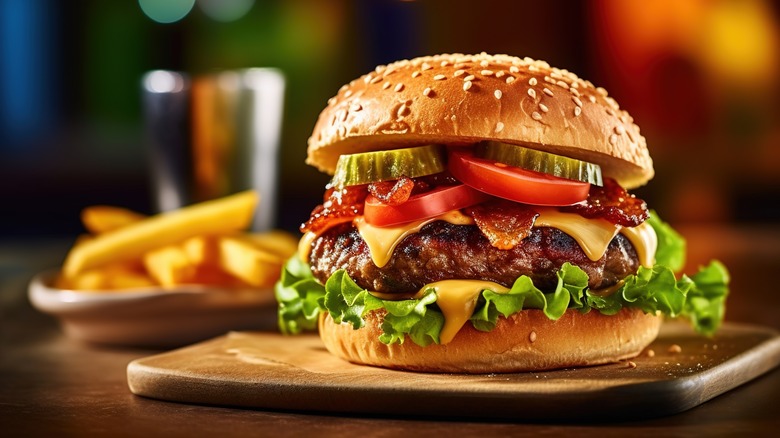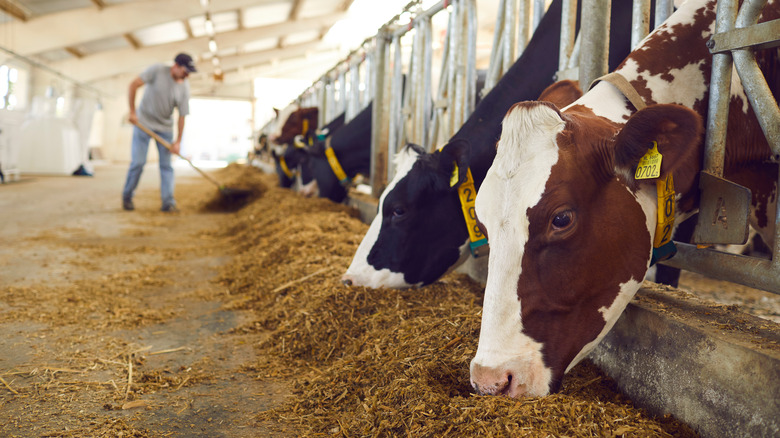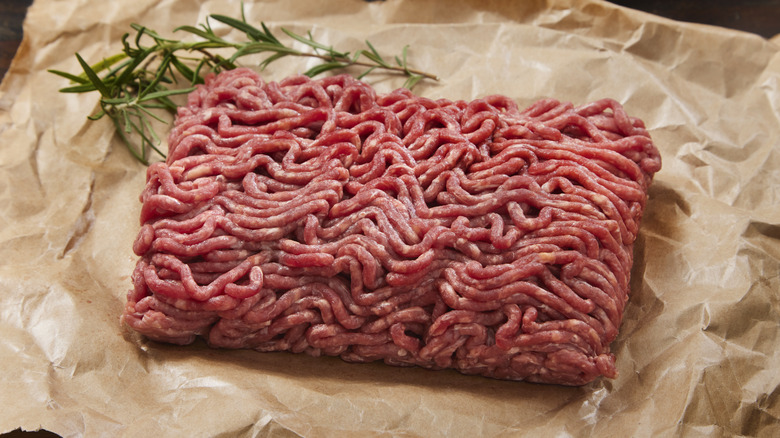Burgers Almost Never Come From A Single Cow
When you bite into a burger or go shopping for ground beef to make your own, you may think that each beef patty is made from the meat of one cow, or just a few cows at most. In most cases, hamburger patties are actually made with ground beef from a lot more cows than you think. Farm Progress surveyed American consumers on this topic back in 2017, and almost no responders correctly guessed the number of cows that typically go into a single hamburger. Almost everyone (90% of respondents, to be exact) guessed too low.
So what is the true number? Meat from more than 100 cows can be used to make one hamburger. If this sounds impossibly high, consider that McDonald's said in 2014 that this many cows may go into its signature Big Mac burgers, according to the Washington Post.
It's important to note that in America, ground beef and hamburger patties are not considered the same, according to U.S. Department of Agriculture (USDA) standards. Products labeled as "hamburgers" can have extra beef fat added to them by manufacturers, but products called "ground beef" cannot. It's possible that the extra fat added to hamburger products could come from yet more cows, adding to the total number of animals used in a single patty.
How hamburgers are really made
Some beef products are typically made from a single cow, while others are almost surely not. In the case of steak, most cuts are sourced from a single cow. The reason why hamburgers wind up containing meat from many cows originates in the butchering process. Butchers first remove what are called primal and sub-primal cuts. Examples of the former include rib, chuck, loin, and brisket cuts; the latter category includes ribeye and round cuts of steak.
Whatever beef byproducts are left over are known as trimmings. Trimmings from many butchered cows are combined by manufacturers, then sorted in order to meet certain lean-to-fat percentages before being ground up to produce ground beef. The only exception is organs, which the USDA prohibits (excepting tongue and heart) from use in ground beef. This is how meat from over 100 cows comes together to form ground beef that is used all over the country.
However, some ground beef is labeled in a way that tells you it was made with just one cut of the cow. Primal and sub-primal cuts may be used to make ground beef, and will be labeled accordingly. Ground chuck is made from chuck roast, and ground sirloin is obviously made with sirloin. These products are of higher quality than ground beef made with beef trimmings, and beef labeled as "hamburger patties" is often of a lower quality than standard ground beef, since it can include added fat in place of pure meat.
The safety concerns for hamburgers
Once you understand the process of making ground beef, you also understand that 100 cows are not slaughtered solely to make one hamburger — most ground beef is a sort of byproduct of these slaughters. However, you may still be wary when you learn that the production of ground beef does present some safety issues, according to Healthline. Compared to a steak or other whole cut of beef, ground beef presents an increased risk of infection from foodborne pathogens like E. coli and salmonella.
These can be present in all beef products, but generally speaking, they're located on the surface of cuts like steak, and are cooked off quite easily in a hot pan. That's not the case with ground beef, due to the fact that the meat from many different cows is ground up and thoroughly mixed together, spreading potential pathogens throughout the mixture. What that means is that ground beef must be cooked to a higher temperature to ensure there's no risk of bacterial illness.
The USDA recommends a final internal temperature of 160 degrees Fahrenheit for all ground beef products. Cross-contamination of other foods after handling ground beef is also a possibility, which is why the Centers for Disease Control and Prevention recommends that restaurant cooks wash their hands, clean utensils, and follow other sanitation practices after handling ground meat. Home cooks ought to do the same.



